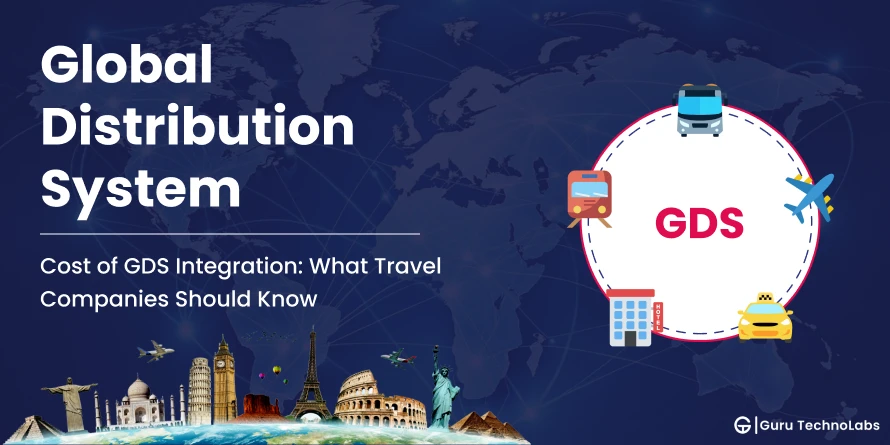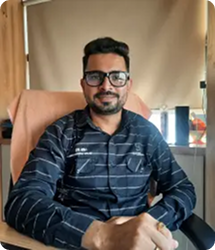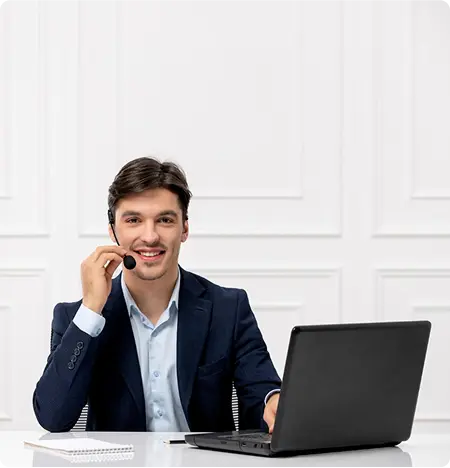Cost of GDS Integration: What Travel Companies Should Know

One of the first questions travel businesses ask before choosing a Global Distribution System (GDS) is not “what does it do?”— it’s “how much will it cost to integrate?”
The cost of GDS integration is not always straightforward. It can include setup fees, annual licenses, API access charges, certification requirements, and per-booking commissions, along with several hidden expenses.
In this article, we will break down the real cost drivers of GDS integration in your travel platform to help you plan costs before getting into it. So, let’s get started.
Key Factors That Influence the Cost of GDS Integration
When integrating a Global Distribution System (GDS) such as Amadeus, Sabre, or Travelport, costs can vary significantly depending on several factors.
The total investment isn’t just about the initial setup, it also includes ongoing maintenance and fees. Understanding these cost drivers is essential to making informed decisions and avoiding unexpected charges later.

Choosing a GDS Provider (Amadeus, Sabre, Travelport, etc.)
Your choice of GDS provider is one of the biggest factors influencing cost. However, top GDS providers such as Amadeus, Sabre, and Travelport each come with their own pricing models, setup fees, and transaction structures.
For instance, Amadeus is often preferred in European markets, while Sabre has stronger adoption in North America. Setup fees are typically a few thousand dollars, and transaction charges are usually calculated as a percentage of each booking, though the exact numbers depend on provider terms and your negotiated agreement.
Some platforms offer lower upfront costs but higher per-booking fees, while others require a higher initial investment with more favorable long-term pricing. Comparing both short-term and long-term expenses is essential when deciding which GDS best fits your business model.
If you’d like a detailed comparison of Amadeus, Sabre, and Galileo, check out our Amadeus vs Sabre vs Galileo guide.
Scope of Integration (Flights, Hotels, Cars, etc.)
The more services you want to integrate, such as flights, hotels, car rentals, or even cruises, the higher your costs will be.
- Each service requires its own API connections and sometimes a separate licensing or transaction agreement.
- For instance, integrating just flights might be simpler and less expensive, while a full-service portal (covering hotels, cars, and packages) will increase both development and ongoing costs.
The complexity and variety of inventory you want to access directly influence your final bill.
Technical Complexity and API Documentation
The ease of integration depends heavily on the quality of the GDS provider’s API documentation and your technical team’s expertise.
- Some GDS APIs are more developer-friendly, while others require extensive technical work, certifications, or compliance checks, which can extend the timeline and increase costs.
- For example, integrating with Sabre or Amadeus may require specialized knowledge and longer development cycles, adding to labor costs and project duration.
- Poor documentation or complex requirements can also lead to higher expenses for troubleshooting and ongoing support.
Development Team & Technology Stack
Who Integrates your travel platform and how they build it is another critical factor. An in-house development team may give you more control but comes with ongoing payroll and training costs. Outsourcing to a specialist travel technology provider can speed up implementation but typically involves higher per-project fees.
The choice of technology stack also plays a role. Some GDS APIs are easier to work with, while others require advanced skills, certifications, or compliance checks that extend development time and increase costs. Your team’s expertise and chosen approach will shape both your upfront investment and long-term flexibility.
Get Expert Help with GDS Integration
Don’t waste months figuring out complex APIs, certifications, and compliance on your own. Our GDS
Integration Services help you go live faster with a reliable, scalable solution built for your business.
Licensing and API Access Fees
Every major GDS provider, Amadeus, Sabre, and Travelport charges licensing and API access fees, which form a core part of your total cost.
These fees can vary depending on whether you’re accessing self-service APIs (often with limited functionality and usage tiers) or enterprise-grade APIs (which offer deeper features but require higher licensing commitments).
In many cases, these fees are negotiable and tied to your transaction volume or market coverage. It’s important to evaluate not just the upfront licensing cost but also the per-transaction charges and potential tiered pricing models, as they can have a big impact on your long-term operating expenses.
Critical GDS Integration Cost Drivers (must-know factors that set your baseline cost)
Beyond the obvious setup and licensing fees, there are certain structural costs that every travel business must account for when integrating a GDS. These costs are less visible upfront, but they often define your baseline investment and determine whether your integration is even possible.
Accreditation & Certification Fees
Before you can access or transact through a GDS, your business usually needs accreditation from bodies like IATA (International Air Transport Association) or ARC (Airlines Reporting Corporation in the U.S.). These accreditations validate your agency’s ability to issue tickets and settle payments.
In addition to accreditation, many GDS providers require certification or developer program enrollment to connect with their APIs. This may include one-time certification fees, annual developer account costs, or mandatory training expenses for your team.
For startups and new entrants, these fees can feel like hidden costs, but they’re essential for compliance and credibility in the global travel ecosystem.
NDC vs. Classic GDS Pricing
Another factor shaping your cost structure is whether you rely only on classic GDS technology (EDIFACT/XML) or also integrate NDC (New Distribution Capability) APIs offered by the same GDS providers.
Classic GDS: Still the backbone of most travel bookings, offering standardized access to flights, hotels, and cars. Costs are generally tied to setup and per-transaction fees.
NDC APIs within GDS: While NDC unlocks richer airline content (like bundled fares, ancillaries, and branded offers), it usually comes at an extra cost. GDS providers often charge additional licensing or certification fees for NDC access, and the integration is more technically complex, leading to higher development expenses.
For most agencies, NDC is not a replacement but an add-on inside the GDS ecosystem. This means that adopting NDC capabilities can improve your offerings but will also raise both your integration and ongoing operating costs.
Negotiated Pricing & Volume Discounts
Unlike many SaaS tools with fixed pricing, GDS costs are often negotiable. The fees you pay, whether for licensing, API access, or per-transaction charges depend heavily on your projected booking volume and market leverage.
Larger OTAs and established agencies often secure:
- Preferential transaction rates
- Rebates or incentive-based discounts
- Lower long-term licensing costs
Smaller agencies or startups may face:
- Higher per-booking charges initially
- Limited access to rebates until they scale
- More rigid terms with less flexibility to negotiate
This means your integration cost is not just about the technology itself but also about your bargaining power with the provider. Factoring in long-term growth and renegotiation opportunities is crucial when forecasting expenses.
Payment Processing & PCI Compliance
Another overlooked cost driver is payment handling. Since most GDS transactions involve credit card payments or other electronic settlement methods, you’ll need to account for merchant fees, gateway costs, and PCI DSS compliance.
- Merchant/processing fees: Typically charged per transaction by payment providers.
- PCI compliance costs: Ensuring your system meets strict data security standards can require audits, infrastructure investments, and ongoing monitoring.
- Chargebacks & fraud protection: Additional risk-management tools may also add to costs.
While these fees aren’t charged by the GDS directly, they are inseparable from running a GDS-powered booking platform. Ignoring them can lead to underestimating your true cost of operations.
Average Cost of GDS Integration in 2025
Average cost of GDS Integration ranges between $5,000 and $25,000 for small to mid-size businesses, while enterprise-level implementations may exceed $30,000 to $50,000, especially when multi-service integration, and ongoing licensing or support fees are included.
Cost by Business Size
The cost of integrating different GDS providers, such as Amadeus, Sabre, or Travelport, scales with your business size and booking volume.
| Business Size | Setup/Connection Fee (One-Time) | Annual Licensing/Access Fee | Transaction/ Commission Fees |
|---|---|---|---|
| Small Agency | $1,000 – $2,500 | $300-$700 | 10%-20% per booking |
| Mid-size Agency/hotel | $2,000- $5,000 | $700-$1,500 | 10%-18% per booking |
| Enterprise-level | $5,000-$15,000+ | $2,000 | 8% -15% per booking |
For instance, a small travel agency integrating Sabre might pay a one-time fee of $500 and a 15% commission on each booking. On the other hand, an enterprise hotel chain using Amadeus could see setup costs of $10,000 +, higher annual fees, but may negotiate lower per-booking commissions due to volume.
How Much Does Amadeus GDS Cost?
The average cost of Amadeus GDS integration ranges from $5,000 to $20,000, depending on your business size, booking volume, and API model.
- Setup Fee: $2,000–$5,000
- Annual Licensing/Access Fee: $700–$1,500
- Transaction Fees: 10–18% per booking
Amadeus API Pricing
Amadeus offers two main API options:
- Self-Service APIs – Pay-as-you-go, best for startups and small agencies. Pricing is based on API usage (calls per month).
- Enterprise APIs – Tailored for OTAs, airlines, and hotel groups. Higher setup and licensing fees, but includes certifications, scalability, and better transaction rates.
How Much Does Sabre GDS Cost?
The average cost of Sabre GDS integration ranges from $4,000 to $18,000, depending on business size, booking volumes, and certification requirements.
- Setup Fee: $1,500–$4,000
- Annual Access Fee: $500–$1,200
- Transaction Fees: 10–20% per booking
Sabre API Cost
Sabre APIs cover flights, hotels, cars, and ancillaries. Costs vary by API type (REST/JSON vs. EDIFACT/XML) and booking volume.
How Much Does the Travelport GDS Cost?
The average cost of Travelport GDS integration ranges from $4,000 to $15,000, depending on business size, booking volume, and services included.
- Setup Fee: $1,000–$3,000
- Annual Access Fee: $400–$1,000
- Transaction Fees: 10–17% per booking
Struggling with GDS Integration? We’ve Got You Covered.
Many travel agency owners find GDS integration confusing and time-consuming. At Guru TechnoLabs, we simplify the process—ensuring fast, compliant, and error-free integration.
Conclusion
The cost of GDS integration ultimately depends on your business size, booking volume, and the specific features you need. Since pricing structures vary between providers like Amadeus, Sabre, and Travelport, the most accurate way to understand your investment is to discuss your requirements directly with their sales team.
However, knowing the numbers is only part of the process. Choosing the right provider and successfully implementing their system requires technical expertise, compliance handling, and ongoing optimization. That’s where a professional GDS integration service can make all the difference.
If you’re looking for GDS Integration in your travel platform, Reach out to us, we guide you through the entire integration journey, from provider selection to seamless deployment.
Frequently Asked Questions
Yes. While setup and per-booking fees are the most visible, agencies often face additional expenses such as:
- Technical Support & Maintenance – Ongoing updates, bug fixes, and provider support.
- Staff Training – GDS systems have a steep learning curve; training can cost $500–$2,000 per staff member.
- Customization & Middleware – Extra development may be required to connect GDS with your existing systems.
- Advertising & Preferred Placement – Paid promotional spots inside GDS systems can add $200–$1,000+ per campaign.
Travelport is often the most budget-friendly for small agencies, but the right choice depends on your market, services, and growth plans.
On average, 4–12 weeks. Flight-only integrations are faster, while full-service portals take longer. A professional GDS integration service can speed up the process.
Yes. Startups can work with an accredited consolidator or partner agency to access GDS content until they obtain accreditation.
Ongoing support includes technical updates, compliance renewals, system monitoring, and scaling to new services. Partnering with a GDS integration provider ensures long-term stability.
Galileo GDS does not have fixed public pricing. Costs typically depend on the Travelport agreement, booking volume, enabled modules, and market region. Most agencies pay a combination of licensing, setup, and transaction-based fees, with pricing negotiated based on usage and business requirements.


















